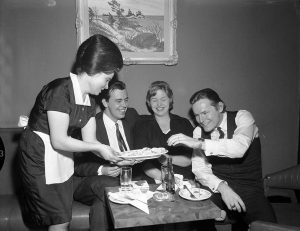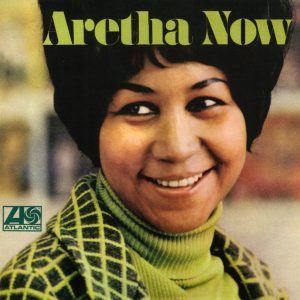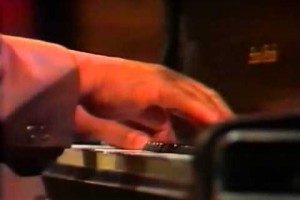It’s against the spirit of jazz to focus too much on a single player, so we are leading off this post about Lionel Hampton with Avalon (above). It features the entire Benny Goodman Quartet (with bassist George Duvivier thrown in for good measure). In addition to Hampton and Goodman (on vibraphone and clarinet, respectively), the quartet has Gene Krupa on drums and Teddy Wilson on piano. It doesn’t really get much better than this.
Below, Hampton plays a burning version of Flying Home on television in 1957. The song, by the way, has its own Wikipedia entry. It was “reportedly developed around a tune Hampton whistled as he nervously waited for his first flight on an aircraft.” Most people get nervous and chew gum. Hampton gets nervous and comes up with a jazz standard.
I watch a lot of video when selecting clips for TDMB. Hampton certainly shares top honors with Louis Armstrong and perhaps a couple of other performers for exuberance and smiles per minute. Check out the little jump at the end of Flying Home.
Here is an appreciation by vibes player Warren Chiasson and the beginning of Hampton’s bio at the site PBS maintains for Ken Burns’ documentary Jazz:
There is some confusion about the year of Lionel Hampton’s birth, which has sometimes been given as 1908. Around 1916 he moved with his family to Chicago, where he began his career playing drums in various lesser bands. In the late 1920s he was based in Culver City, California, where he worked in clubs and took part in several recording sessions (1930) with Louis Armstrong, who encouraged him to take up vibraphone. Hampton soon became the leading jazz performer on this instrument, and achieved wide recognition through his many film appearances with Les Hite’s band. After playing informally with Benny Goodman in 1936 he began to work in Goodman’s small ensembles, with which he performed and recorded regularly until 1940; as a result he became one of the most celebrated figures of the swing period, and his resounding success allowed his to form his own big band in 1940. (Continue Reading…)









Add Comment